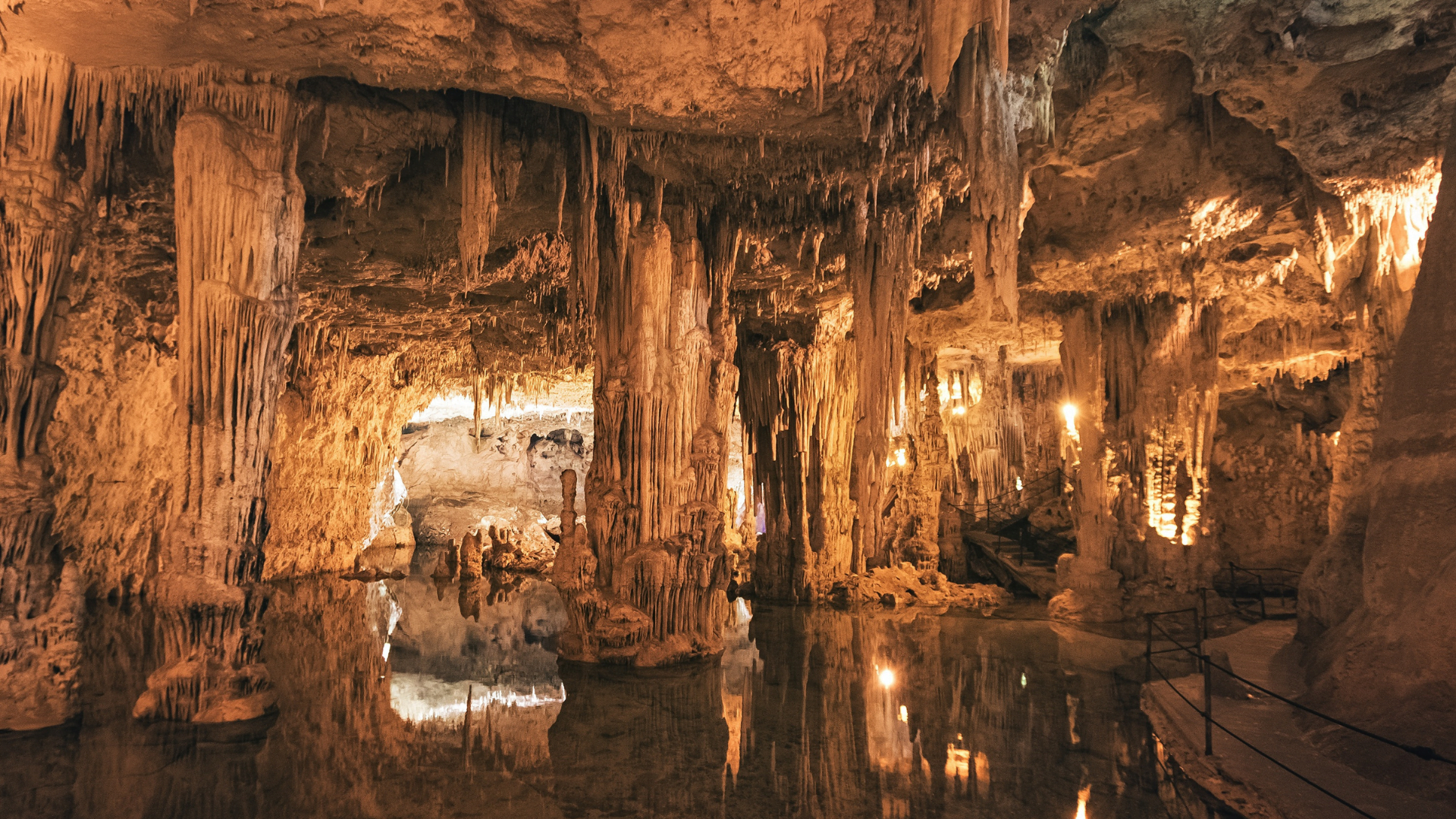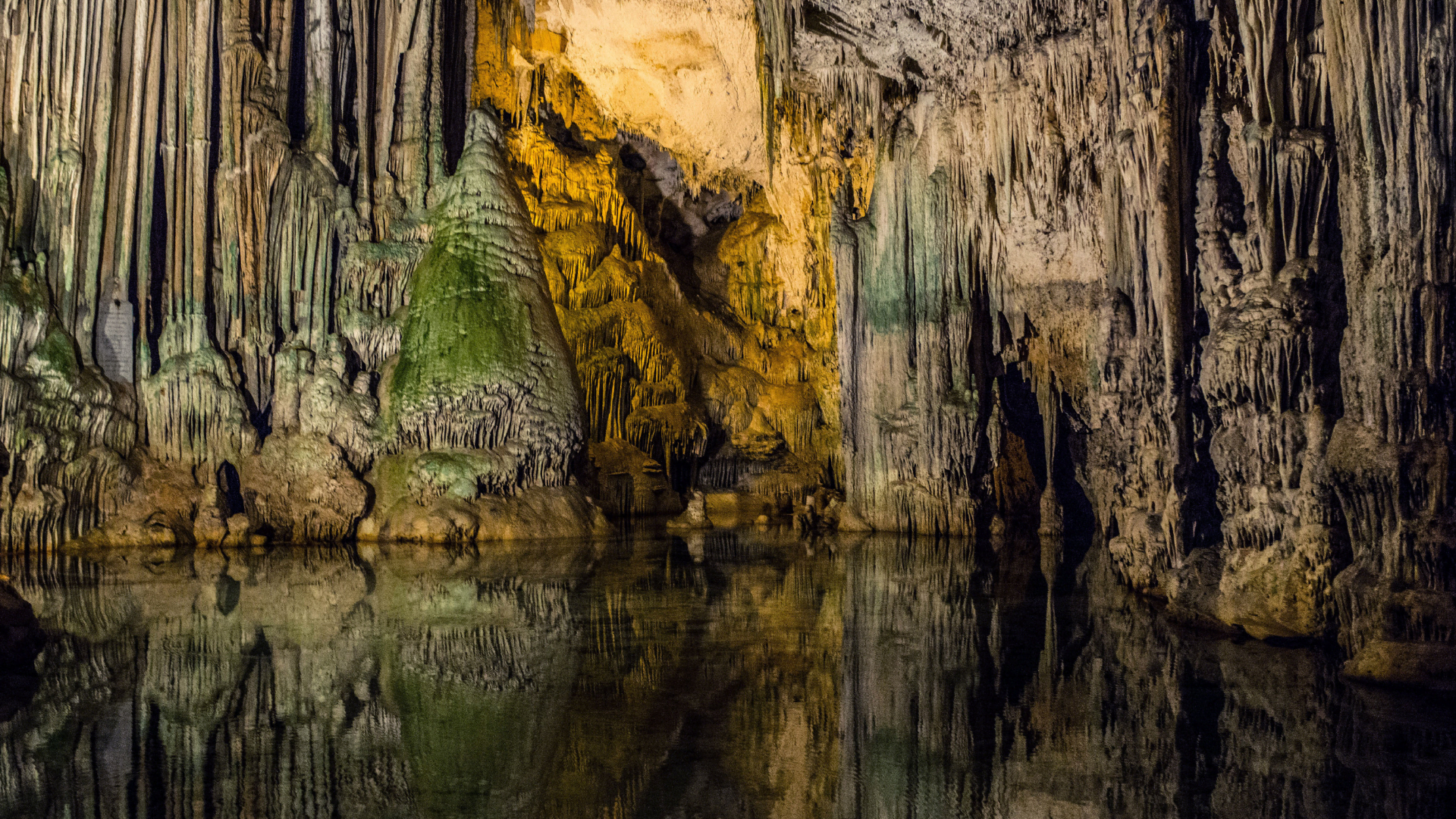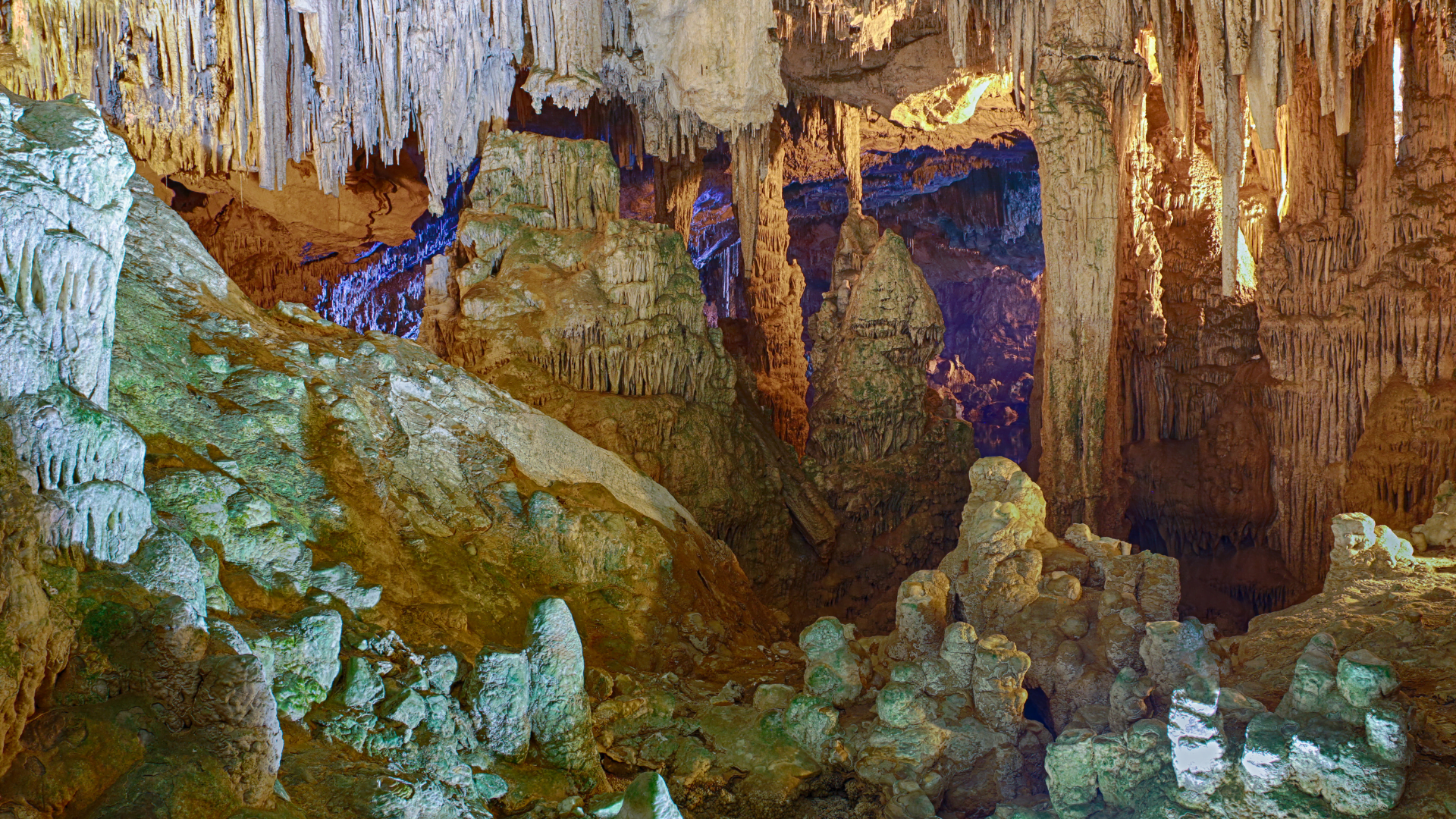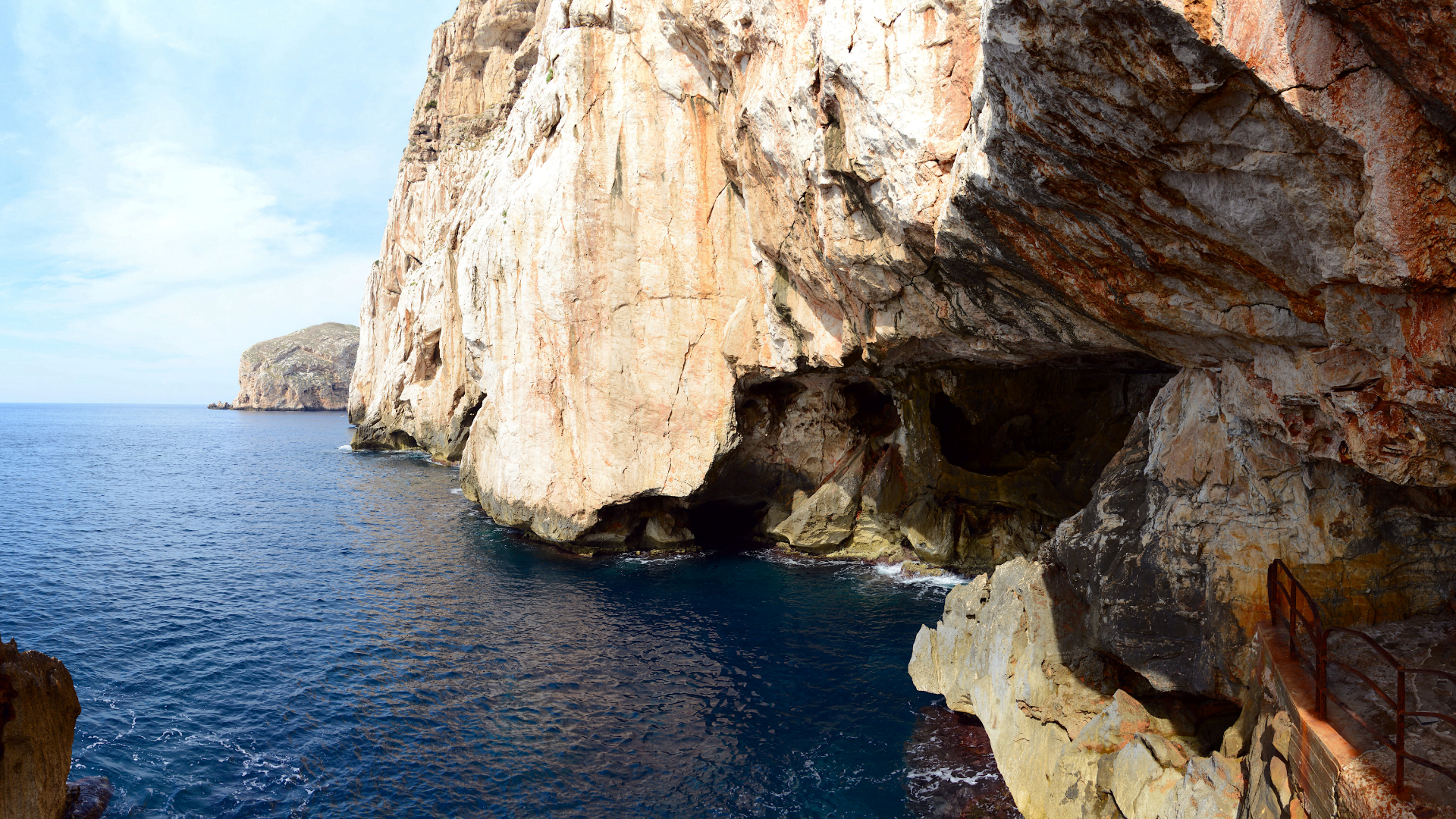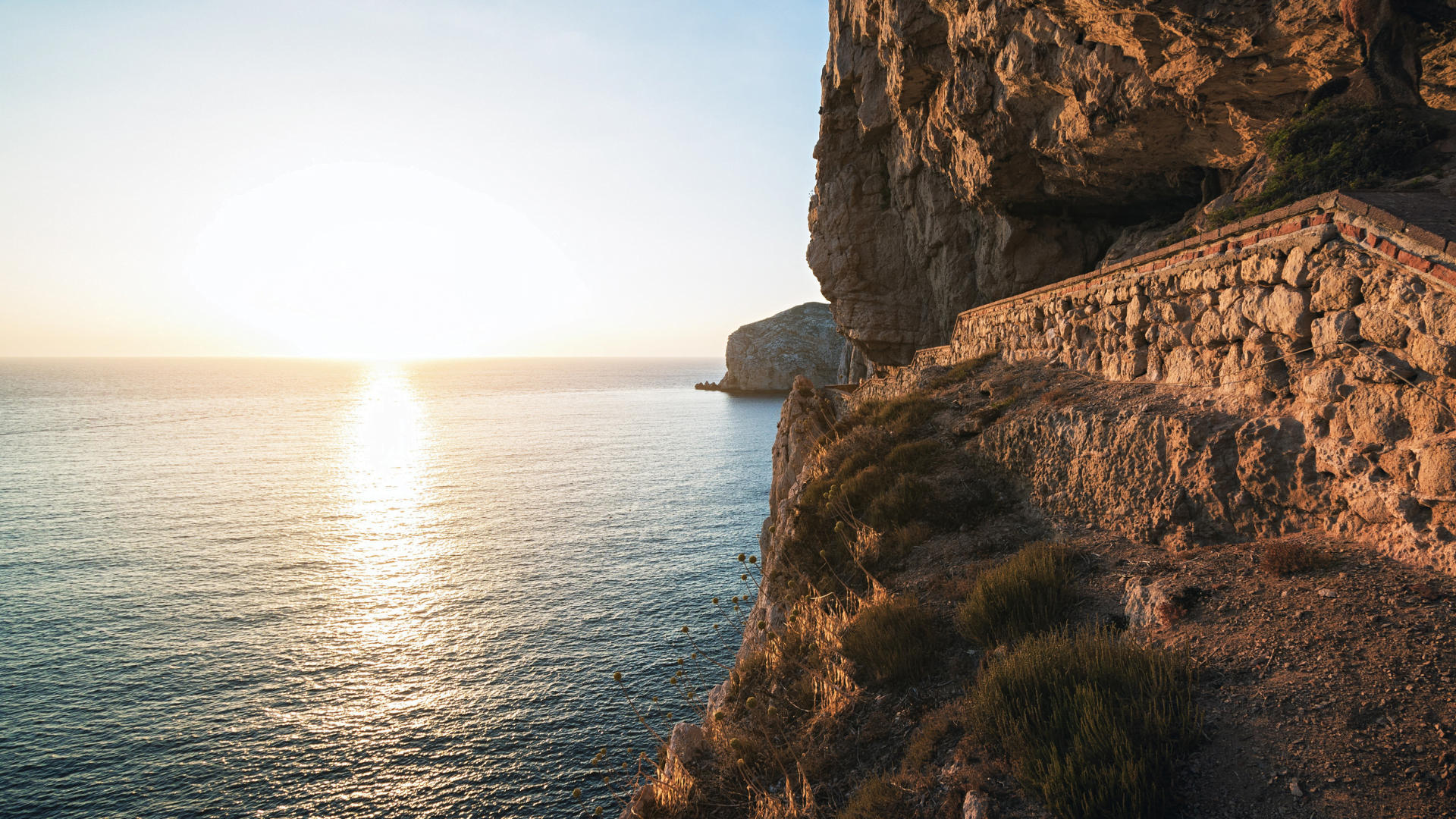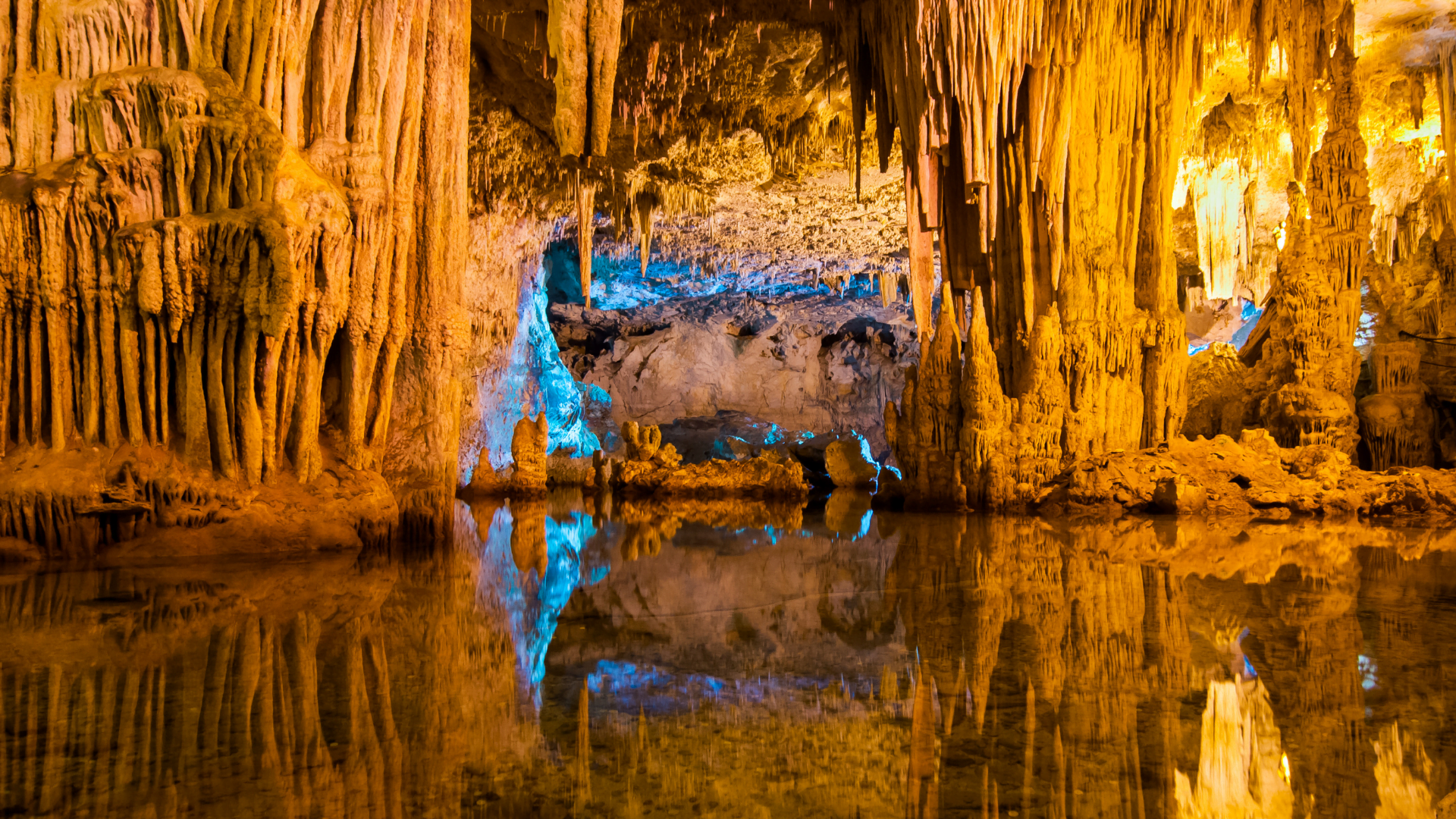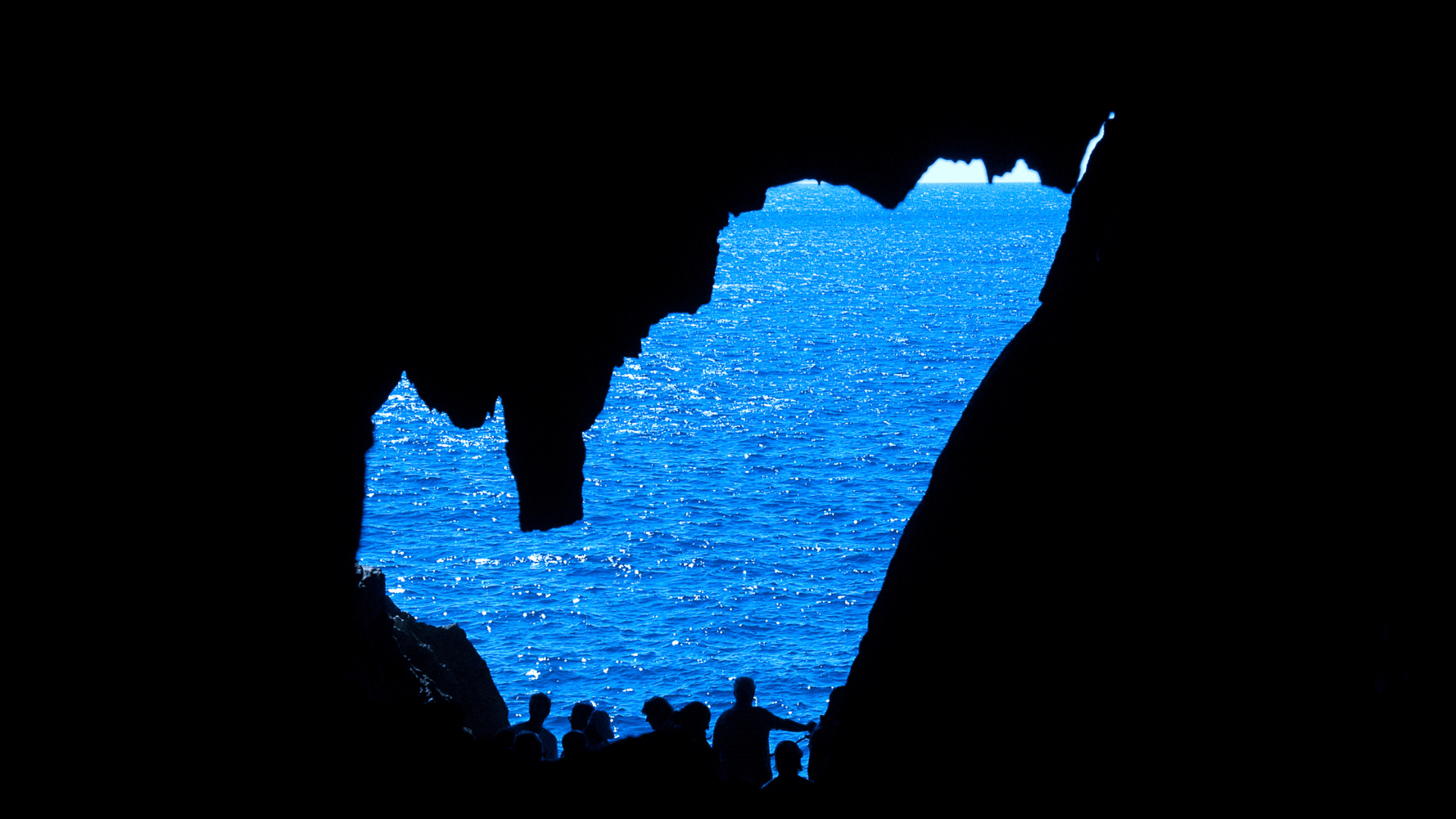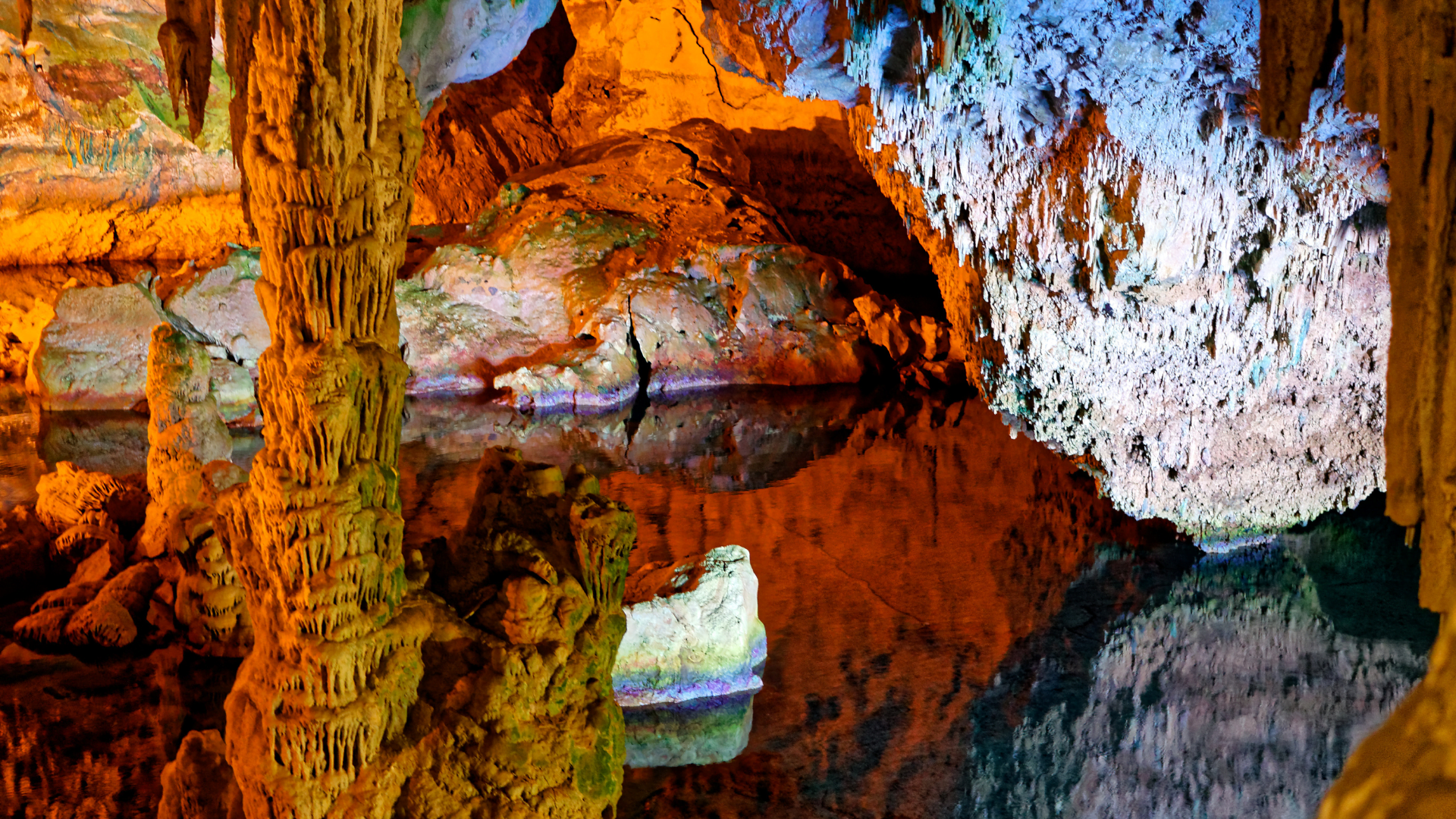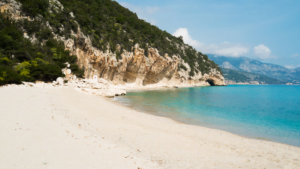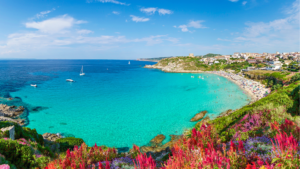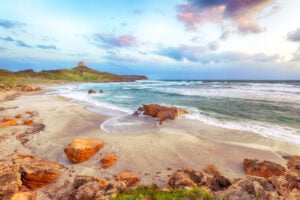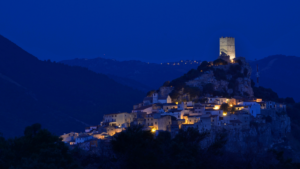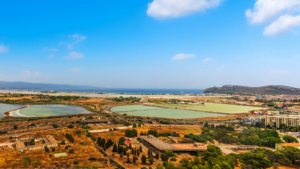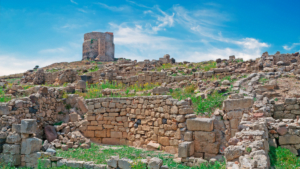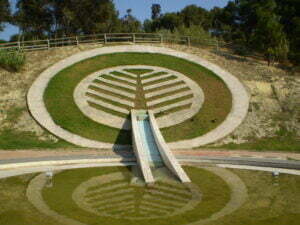Neptune’s Grotto is a remarkable natural wonder located in Capo Caccia, near Alghero, on the island of Sardinia, Italy. This stunning cave system is renowned for its breathtaking stalactite and stalagmite formations, making it one of the most beautiful and impressive stalactite caves in Europe.
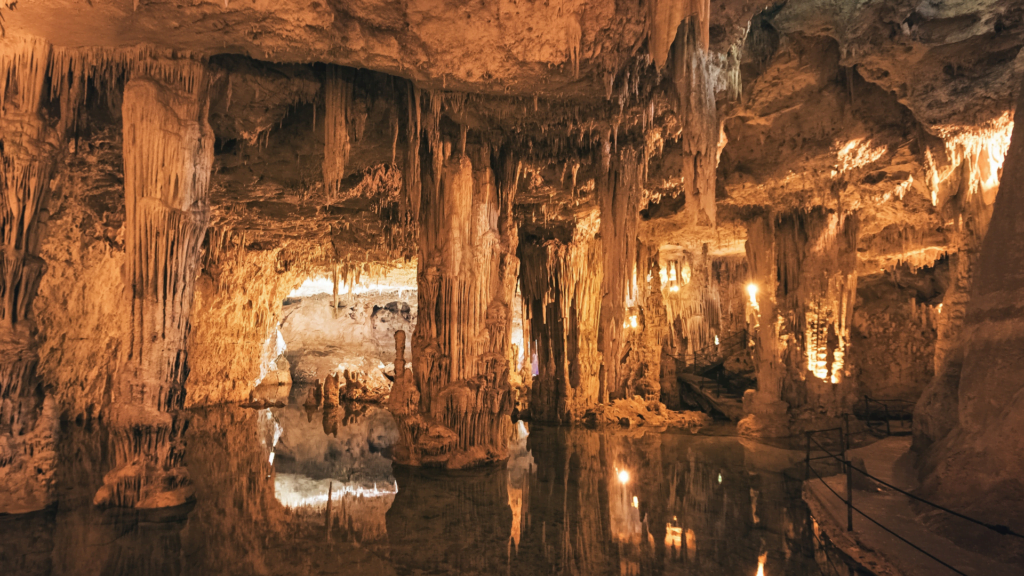
Discovered in the 18th century by a local fisherman, Neptune’s Grotto offers visitors a unique glimpse into the geological history and natural beauty of Sardinia. Whether accessed by land or sea, the grotto promises an unforgettable experience, showcasing nature’s artistry in its most spectacular form.
Photos
History and Geology
Neptune’s Grotto was discovered in the 18th century by a local fisherman. This discovery revealed a magnificent cave system that has since become a popular attraction for visitors from around the world.
The cave gained additional fame when it was used as a filming location in the 1978 movie “Island of the Fishmen”, highlighting its mysterious and dramatic landscapes.
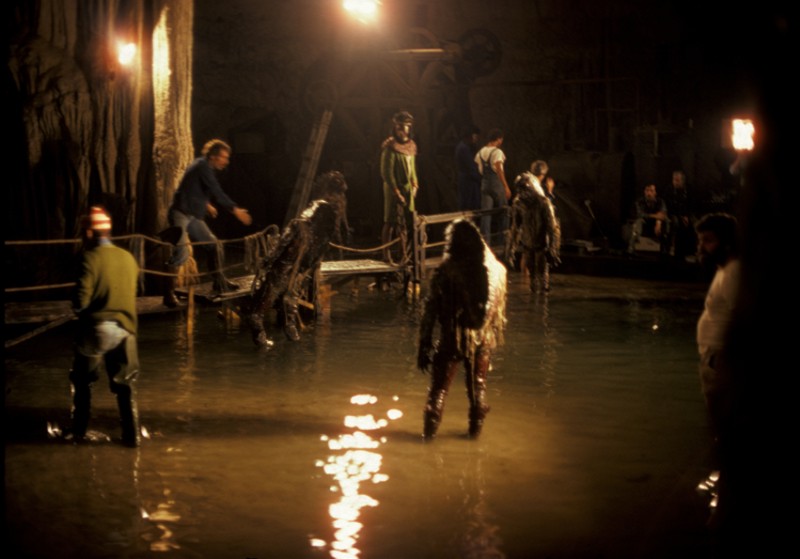

Geological Formation
The grotto is a classic example of a karst formation, created through the dissolution of soluble rocks, primarily limestone, over millions of years. This process results in the formation of stalactites and stalagmites, which are prominent features of Neptune’s Grotto.
- Stalactites hang from the ceiling of the cave, formed by the deposition of minerals from dripping water.
- Stalagmites rise from the ground, created by the accumulation of minerals from water drops falling to the cave floor.
The continuous interplay of water and limestone has crafted a mesmerizing underground landscape, with intricate formations that have developed over countless centuries, making Neptune’s Grotto a geological masterpiece.
Guided Tours
Tour Structure and What to Expect


Visitors to Neptune’s Grotto can only explore the cave through mandatory guided tours. These tours are essential for ensuring both the safety of visitors and the preservation of the delicate cave environment. Here is what you can expect from the tour:
- Tour Duration: Each guided tour lasts approximately 30 to 60 minutes.
- Languages: Tours are typically conducted in both Italian and English.
- Safety Measures: Due to the fragile nature of the cave’s formations, touching the stalactites and stalagmites is prohibited to prevent damage.
Here you can find a private trip from Cagliari, or a small group tour from Alghero.
Key Formations and Rooms To Visit


The guided tour takes visitors through several stunning sections of the cave, each featuring unique geological formations and impressive sights.
Rooms To Visit:
- Lago Lamarmora (Lake Lamarmora)
- This is one of the largest saltwater lakes in Europe found within a cave.
- Visitors can marvel at the clear waters and the surrounding stalactites and stalagmites.
- Sala delle Rovine (Room of Ruins)
- Known for its collapsed sections, this room showcases the power and history of natural geological processes.
- Reggia (Palace Room)
- The highlight of the tour, featuring majestic columns and expansive space.
- This room offers a sense of the grandeur and scale of Neptune’s Grotto.
- Sala Smith (Smith Room)
- Named after the English captain who was one of the earliest explorers of the cave in the 19th century.
- This room contains the Grande Organo (Great Organ), the largest column in the cave, resembling organ pipes.
- Sala delle Trine e dei Merletti (The Lace Room)
- Known for its delicate and intricate limestone formations, resembling lace.
- The room is adorned with small columns and other fine details, showcasing the delicate beauty of the cave.
Key Formations
Acquasantiera
- A monumental stalagmite that resembles a baptismal font.
- This formation collects rainwater, providing a natural drinking source for birds in the Capo Caccia area.
Albero di Natale (Christmas Tree)
- A distinctive stalagmite known for its unique shape, reminiscent of a Christmas tree.
- It stands prominently among other formations, showcasing the natural artistry of mineral deposits over centuries.
Grande Organo (Great Organ)
- The largest column in the entire grotto, this formation resembles the pipes of a grand organ.
- Located in Sala Smith (Smith Room), it is named in honor of an early explorer and adds to the dramatic ambiance of the cave.
Where to Stay Near Neptune’s Grotto
When visiting Neptune’s Grotto, staying nearby can enhance your experience, allowing you to explore the surrounding natural beauty and enjoy convenient access to the cave. Here are some of the best accommodation options:
Best Hotels and Accommodations


- Location: Porto Conte
- Description: This luxury hotel offers stunning views of the sea and Capo Caccia. It features a private beach, a large outdoor pool, and a wellness center.
- Amenities: Spa services, restaurant, free Wi-Fi, and shuttle service to Neptune’s Grotto.
- Location: Fertilia
- Description: A beachfront hotel surrounded by pine forests, offering a relaxing atmosphere and easy access to the beach.
- Amenities: Two outdoor pools, a restaurant serving local cuisine, and various water sports activities.
- Location: Le Bombarde Beach, Alghero
- Description: Set on a private beach within a natural park, this hotel provides a peaceful retreat with beautiful views and direct beach access.
- Amenities: Private beach, swimming pool, restaurant, and bike rentals.
4. Villa Las Tronas Hotel & Spa
- Location: Alghero
- Description: A historic villa turned luxury hotel, offering elegant rooms and panoramic views of the Gulf of Alghero.
- Amenities: Spa, outdoor pool, fine dining restaurant, and proximity to Alghero’s old town.
- Location: Fertilia
- Description: Ideal for those who enjoy camping, this village offers various accommodation types, from pitches for tents to mobile homes.
- Amenities: Beach access, water sports, mini club, and on-site dining.
Additional Tips
- Book Early: Accommodations near Neptune’s Grotto can fill up quickly, especially during peak tourist seasons. It’s advisable to book well in advance.
- Transportation: Some hotels offer shuttle services to Neptune’s Grotto. Check with your accommodation for transportation options.
- Local Dining: Many of these hotels have excellent on-site restaurants, but exploring local dining options in Alghero can also be a delightful experience.
Where is Neptune’s Grotto
Neptune’s Grotto is located near the town of Alghero on the island of Sardinia, Italy. It is situated on the Capo Caccia promontory, approximately 24 kilometers from Alghero.
How to Get There
By Land
One of the most scenic ways to reach Neptune’s Grotto is via the Escala del Cabirol (Goat’s Steps). This path consists of 654 steps carved into the cliffside, providing breathtaking views of the surrounding landscape as you descend to the cave entrance. Here are some tips for making the journey by land:
- Parking: Parking near the top of Capo Caccia can be limited, especially during peak seasons. It’s advisable to arrive early to secure a spot. There are designated parking areas, but overflow parking may be required on the roadside.
- Accessibility: The descent via the Escala del Cabirol can be physically demanding, so it’s important to wear comfortable shoes and be prepared for a strenuous climb back up.
By Sea
For those looking for a more relaxed approach, boat tours are available from Alghero and Cala Dragunara. These tours not only provide convenient access to Neptune’s Grotto but also offer spectacular views of the coastline and cliffs.
- Departures: Boats to Neptune’s Grotto depart regularly from the tourist port in Alghero and from Cala Dragunara.
- Booking: It is recommended to book tickets in advance, especially during the busy tourist season. Tickets can usually be purchased online or at the departure points.
- Cost: The cost of the boat trip varies depending on the tour operator and the season. Typically, boat tickets do not include the entrance fee to the grotto, which must be paid separately upon arrival.
Nearby Attractions
When visiting Neptune’s Grotto, there are several other fascinating caves and natural sites in the Capo Caccia area that are worth exploring. These attractions offer additional opportunities for adventure and sightseeing, enhancing your overall experience.
Other Caves and Natural Sites
2. Green Cave (Grotta Verde)
- Description: Also known as the Cave of the Altar, this cave is renowned for its greenish light created by the reflection of water and rock formations. It was historically used as a place of worship and burial site dating back to the 6th millennium BC.
- Access: Generally reserved for experienced cave divers due to its underwater sections and complex structure.
3. Nereo’s Cave
- Description: Recognized as the largest underwater cave in Europe, Nereo’s Cave offers a unique and thrilling experience for diving enthusiasts. The cave system includes expansive underwater passages and stunning marine life.
- Access: Accessible only to qualified and experienced divers. Guided diving tours are available through local diving centers.
Activities
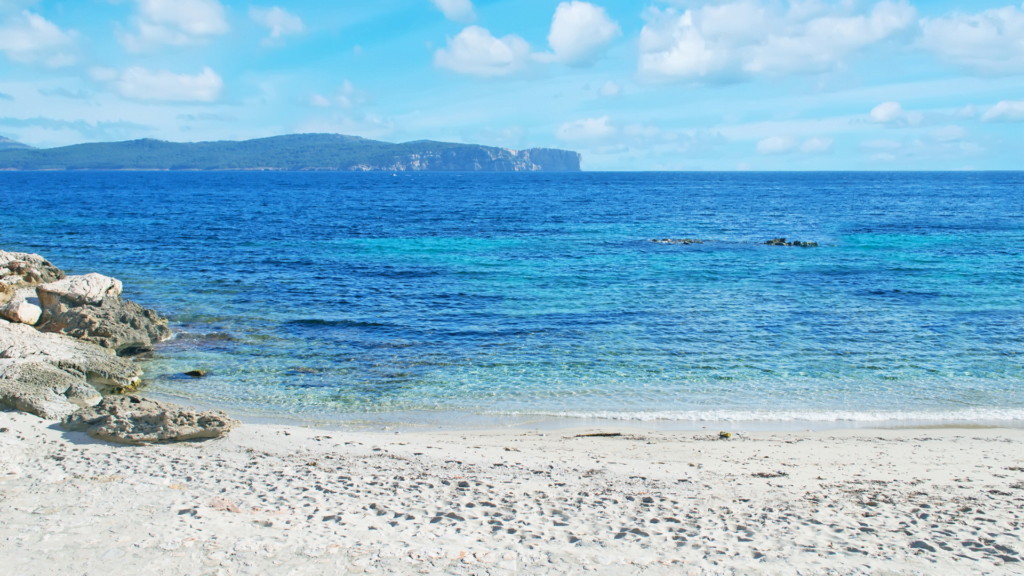

1. Climbing and Diving
- Climbing: The cliffs of Capo Caccia are popular among climbing enthusiasts. The area offers a variety of routes that cater to different skill levels, providing climbers with stunning views and challenging ascents.
- Diving: Apart from Nereo’s Cave, the Capo Caccia area offers numerous diving spots with rich marine biodiversity, underwater caves, and clear waters. Local diving centers provide equipment rentals and guided dives.
2. Beaches and Observation Points
- Beaches: Nearby beaches such as Spiaggia di Tramariglio and Cala Dragunara offer pristine sand and crystal-clear waters, perfect for a relaxing day by the sea. These beaches are ideal for swimming, snorkeling, and sunbathing.
- Observation Points: The area around Capo Caccia offers several observation points that provide panoramic views of the coastline and the Mediterranean Sea. Notable spots include the observation tower at Torre del Tramariglio and the cliffs at Capo Caccia.


